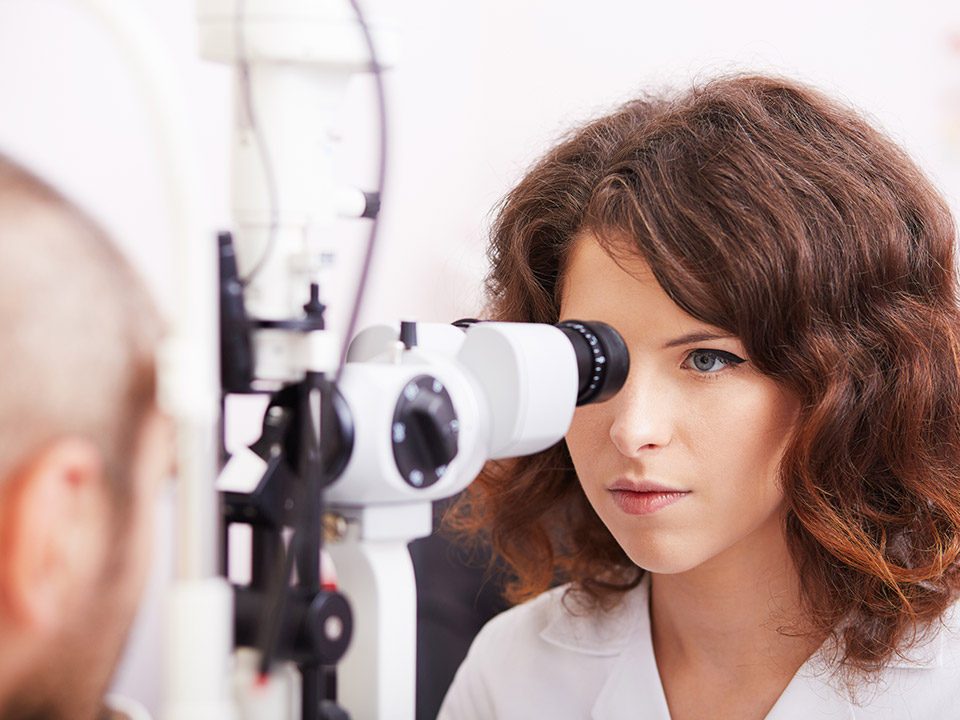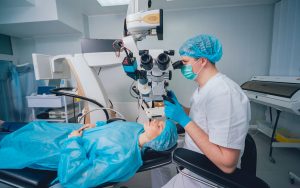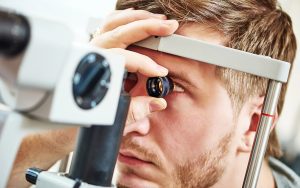Peripheral Vision Loss

Lacking peripheral vision can change the way you interact with people and how you view the world. However, before we get deep into peripheral vision loss, we need first to understand what peripheral vision is.
Peripheral vision is the part of your sight outside your central field of vision. This vision allows you to see things on the sides without turning your eyes or head. Peripheral vision activates when you notice objects or items out of the corner of your eyes.
Peripheral vision loss is also commonly referred to as tunnel vision. These peripheral vision issues can be permanent or temporary. It can also be sudden or gradual. Typically, older people have a higher chance of suffering tunnel vision, but it can happen to anybody.
Signs and Symptoms of Tunnel Vision
Patients who suddenly develop tunnel vision can easily tell there is a problem with their vision. However, in some instances, issues with peripheral vision can start slowly. Therefore, you can easily overlook tunnel vision signs and symptoms.
Unfortunately, the longer you ignore the peripheral vision loss signs and symptoms, the higher the chances of developing permanent damage. If you notice any issues with your peripheral vision, consider seeking the advice of a doctor immediately.
Some of the common tunnel vision signs and symptoms include:
- Blurry vision
- Difficulty seeing at night
- Blind spots in one’s vision
- Bumping into people or objects
- Sensitivity to light
- Only being able to see things or objects that are right in front of you
- Seeing glares and halos around lights
- Swelling and redness of the eyes
- Unusual pupil size changes
All these tunnel vision signs and symptoms should be cause for concern and need to be examined by an eye specialist immediately.
Causes of Peripheral Vision Loss
Numerous underlying health complications can cause tunnel vision. Migraines can cause temporary peripheral vision loss, while other complications can increase the chances of developing permanent peripheral vision loss.
You might experience tunnel vision gradually over time. In addition, it may only affect one side of your vision initially. Some of the most common causes of this include;
- Retinitis Pigmentosa- This inherited medical condition can gradually cause tunnel vision. It can also affect your central and night vision as the retina deteriorates. This rare health condition has no cure, but if you diagnose the problem early, you can plan how to adapt to vision loss.
- Glaucoma- This eye complication involves fluid build-up causing pressure in the eyes and directly impacting your peripheral vision. If this condition is left untreated, it can cause damage to the optic nerves and lead to irreversible blindness.
- Stroke- Strokes commonly cause permanent vision loss on one side of the eye. The main reason for this is that a stroke affects just one side of your brain. This is a neurological kind of vision loss, as the eyes are still working fine. But the brain is unable to process what you see properly. A stroke can also cause scotoma.
- Scotoma- If you damage your retina, you can develop blind spots in your vision, commonly referred to as scotoma. This can result from inflammation, glaucoma, macular degeneration, and other eye complications.
- Migraines- A Migraine is a kind of headache that can lead to vision changes. The American Migraine Foundation claims that around 25% to 30% of those that suffer migraines have visual changes when they develop migraines with auras.
- Diabetic retinopathy- This health condition occurs if you have diabetes and suffer retina damage due to high blood pressure that restricts and inflames the blood vessels in your eyes.
How to Diagnose the Problem
Because later diagnosis might increase the risk of permanent tunnel vision or other vision-related complications, it is crucial to get your eyes and peripheral field of vision tested regularly.
Luckily, numerous peripheral eye tests can help diagnose the cause, thus leading to better management and treatment.
A comprehensive eye examination is one of the best ways to test one’s peripheral vision. If your eye doctor suspects problems with your peripheral vision, they might conduct more eye exams to diagnose the issue.
Some of the most common tests include:
- Confrontation visual field tests- covering one of your eyes and looking straight at the eyes of the examiner while calling out how many fingers they are holding up to the side.
- Automated perimetry tests- focusing on the center of a bowl-shaped object and spotting the flashing lights off to the sides.
- Goldman field test or tangent screen test- focusing on a target on a display screen a couple of feet away and calling out when you can see objects using your peripheral vision.
While seemingly basic, all these tests can help determine if you have an issue and its treatment solutions.
Treatment
Temporary tunnel vision caused by something like migraines will disappear with no treatments. However, other complications caused by peripheral vision loss will need special care.
But it is important to note that some peripheral vision issues have treatments while others do not, and the damage is irreversible.
Depending on what caused your peripheral vision loss, your eye doctor might suggest treatment or management options like surgery, eye drops, and lifestyle adjustments. When it comes to glaucoma, your doctor can prescribe medicine that helps reduce eye pressure.
Final Thoughts
Peripheral vision allows you to see things around you without moving your eyes or turning your head. It is what helps you sense motion. In addition, it allows you to avoid constantly crashing into things.
As mentioned above, underlying issues are what usually cause tunnel vision. Two of the most common are retinitis pigmentosa and glaucoma. If you catch these symptoms early, you can treat the issue, improving the chances of restoring your peripheral vision.
With that said, be sure to visit our establishment as soon as you notice any of these symptoms. Early detection can improve recovery results.
Our ophthalmologist will be able to diagnose the issue, determine the underlying cause, and offer treatment or management options depending on your case. Do not hesitate to preserve your peripheral vision today.




